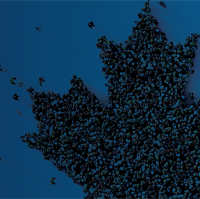“Current inflation is just transitory.”
How many times have you heard that recently? Both the Bank of Canada and the US Federal Reserve have been at pains recently to convince us that the current spike in inflation is only temporary.
But we’re feeling it, aren’t we? Anyone who managed to get away for a vacation this summer, or anyone going out for a meal, or anyone buying groceries, will be aware that inflation is here, and it’s considerable.
US inflation levels reached a 13-year high of 5.4% in July 2021, while Canada’s August inflation level of 4.1% was the highest in 18 years1. Certain sub-categories have seen even higher increases, such as gasoline, airline tickets and used vehicles.
Central banks believe that the current spike in inflation is mostly down to increased demand, fuelled by opening economies, as well as supply issues caused by lockdowns. While this is partly true, there are other factors fuelling inflation, such as increasing wages, with various sectors having to boost salaries to lure back staff.
Also, after over 18 months of on-again-off-again lockdowns, people are willing to spend more to enjoy their lives fuller. We will have a higher spending threshold for some time, given how much many of us were able to save when we weren’t able to travel or even go out.
Also, commodities are likely to remain in low supply and high demand for some time, thus pushing up their prices. During the first year or so of COVID-19, many mines around the world were forced to close due to safety issues and lack of demand. Reopening mines takes time and can be a lengthy process. Staff have to be re-employed and supply chains re-instigated.
It’s a similar story for shipping. Demand froze for so long, but now it’s back, and it’s currently close to impossible to find short-term container capacity. These aren’t issues that are going away any time soon. Global manufacturers are struggling to receive materials and then ship finished goods. All of this adds up to less supply and more expensive products.

